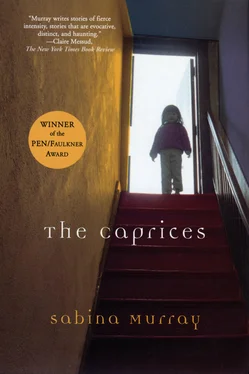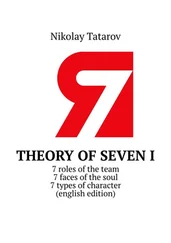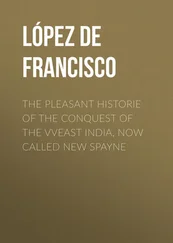Earhart is cruising northward of her accepted coordinates. She has arranged with American intelligence to swing over Truk, an island on the eastern end of the Caroline chain. Reports submitted to the League of Nations reveal unprecedented supply deliveries to this desolate rock and the American navy is suspicious. What is Japan doing? Earhart plows on into unfriendly territory. She picks up her radio and nervously transmits her coordinates, which are far to the east of her true location. This is to confuse the Japanese, listening in, from knowing her true purpose. Where is she flying in the deepest night? Where does the sea separate from the sky? Where is the comfort of the line of horizon?
Aviator. Wife. Writer. Woman. Does she need also to be a spy? A soldier of intelligence? Earhart is no stranger to war. She has seen its work. She has nursed boys lying on their cots, watched new blood pumped back into thirsting veins, seen the elbows heal into smooth nubs. She has observed the boys in their wheelchairs learning to navigate the hospital corridors, trying to find their way home. Earhart knows that after conflict, there is no true restoration.
At 19:30 the Itasca receives a transmission: “KHAQQ calling Itasca . We must be on you but cannot see you. . Gas is running low. .”
And then at 20:14: “We are on a line of position 157 degrees–337 degrees — we will repeat this message on 6210 kilocycles, wait listening on 6210 kilocycles — we are running north and south.” Which puts the Electra approaching Howland from a northeasterly direction. Lae, New Guinea, lies in the southeast.
This is the last the world will hear from Earhart.
For sixteen days eight U.S. Navy ships and sixty-four aircraft comb 138,000 square miles of the Pacific at a cost of four million dollars. Nothing of the aircraft or of the pilot and navigator is ever found.
Saipan has a new resident.
Pia is ten years old when the American woman appears on the island. Pia thinks that she does not look dangerous, limping, her blunt short hair illumined around the edges by the sun. The woman has no shoes and her feet are long and narrow, not like any feet Pia has ever seen. They are white like polished stone. The woman walks between two soldiers, defeated. Pia hurries to catch up with the woman. She walks a cautious distance away, parallel with the party’s advance, whistling at the birds in the trees, her interest suddenly caught by the barking of a dog. But always watching the woman. The woman stops. She squats down and takes deep breaths. Her face is gray, not like a living person’s. She says something softly to the guards, then to Pia’s surprise, waves her over. Pia cautiously walks across the street.
She is scared of this woman. Why is she here? Why are the soldiers guarding her?
The woman smiles, but she is in pain. Pia approaches, and then she sees the burns, flaking blackened skin, the whole left side of the woman’s face puffed with fluid. There are bubbling blisters all down the woman’s left arm. Pia thinks that she is two women sewn together up the middle — one wiry and hard like the bark of a tree, the other slippery and scaly like a fish. She is scared. The woman has something in her hand that she is holding out to Pia. She nods her head, offering, offering, but the child is scared. She presents the woman with her round face, baked brown like bread. Her hair hangs heavily at her shoulders. There is something defiant to the set of her mouth.
Can she read? Earhart wonders. Does she work in the fields? Does she have toys or brothers or a dog, like some of these thin animals tied to the stilts of the houses? The ring came easily off her finger — a gift from her husband, but she has no use for rings, or fingers for that matter. In the instant that the plane plunged into the flat blue sea, she admitted her life was over and now does not know how to think of these days that are left. She knows that her wounds are infected. She knows that her dysentery is dissolving her strength. She knows that the tea and unguents that she has been given are inadequate to restore life. She holds the ring out to the child, wisely turning her head to present the half that was not burned in the crash. The child steps forward and then hustles quickly the final steps. She takes the ring — a platinum setting with a perfect pearl, round like the earth — off Earhart’s hand, hopping back to a safe distance. The child smiles, looks up at the guards, who are very serious but young and familiar. The child stammers out a few words in Japanese and the soldiers respond, but the child is not satisfied with the answer. Her thick brows come together and finally she says, “ Gracias ,” with the intonation of a question.
The American woman smiles and says, “De nada.”
From her final room Earhart can see workers dismantling the remains of the Electra. She sighs heavily. Her days, drifting in and out of consciousness, are spent trying to relay psychic messages through the radio lines. She imagines the radioman on the Itasca picking up the signal.
“It’s Earhart. These coordinates. . She’s on Saipan. She says the Japanese are geared for war. Truk is plated with armor, fitted with guns. Prepare. Prepare. .”
And then they lose the signal as Earhart drifts out of range.
On December 7, 1941, the Japanese bomb the American fleet where it bobs innocently in Pearl Harbor. In this action the pride of the American navy is destroyed, the remaining ships mobilized — tempted — through the string of islands. The Japanese army is suddenly everywhere. One by one the nations fall. Indonesia. Malaysia. Singapore. The Philippines. The Co-Prosperity Sphere widens, a stain tingeing the Pacific a brilliant red. Saipan now boasts troops, guns, and battleships bobbing off the coast. The civilians pack their things into rattan bags, boxes, waiting calmly for the ships that will bear them to Japan. But as the war progresses, an element of fear enters the island. The Americans, once thought to be pathetic, harmless, are now a threat. The soldiers, battle hardened and exposed, tell tales of murder, cannibalism, and rape. Mothers hold tightly to their children’s wrists, waiting to be delivered from the island, combing the horizon for the transport ship. Here on Saipan they are served up to the enemy. They sharpen bamboo spears. Machetes, once used for harvesting sugar cane, are drawn across whetstones. The song of blade and stone is heard in every house.
On June 15, 1944, American forces begin the scheduled destruction of Saipan. There are 535 ships assembled in the harbor. B-29s divide the skies, dropping bomb after bomb. The sugar refinery bursts in an explosion. Twisted steel and burning beams heat the ground. Cars are blown upward like paper ornaments. The streets are silenced in a massive boom. When the cloud of dust settles, huge craters where once houses stood are revealed. The chaos of finding children, finding husbands and wives, tallying the dead, continues late into the night. Carrying food, children, knives, the peasants move northward. There is a warren of caves carved into the rock. The Japanese army has already established itself here. Let not the mistakes of Peleliu be repeated. Give the American monsters the beach. Make them crawl the slope of rubble and debris, over fallen men — both American and Japanese — to the dark mouths of the caves. Slay them at the threshold of the redoubt.
General Saito patiently waits for reinforcement from the air. A plane can fly from Japan to Saipan and back. It is safe bombing distance. This is why the American victory here will be the end of the war. But the runways of Japan are quiet, the planes funneled elsewhere or stilled at the bottom of the sea. The Japanese pilots who are not already dead are not of the warrior class. They are humanities students from the university, teenagers, scientists, whose flying skills allow them only one final flight. They are the “Divine Wind,” which Saito wryly notes will not blow his way anytime soon.
Читать дальше












